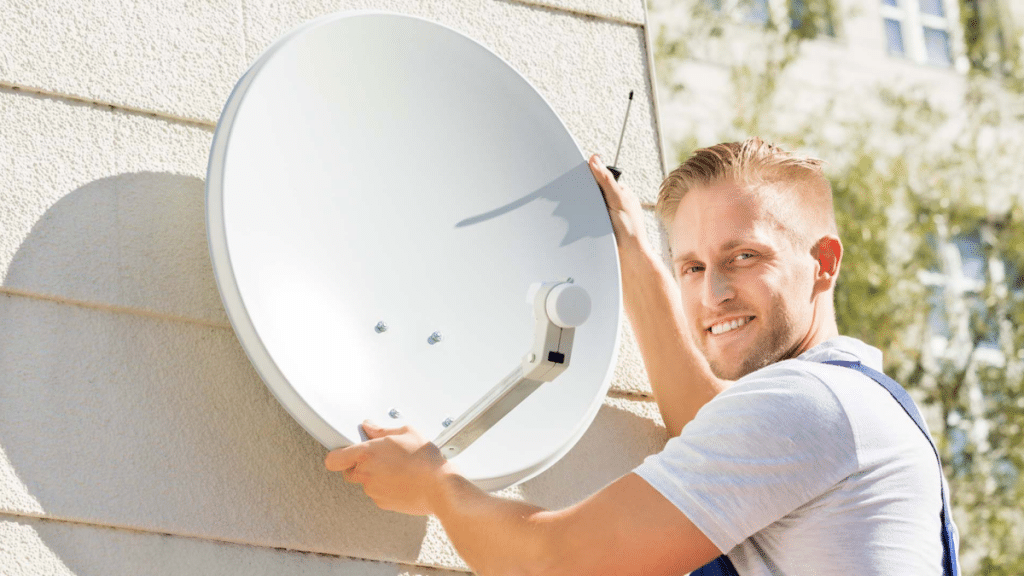In the digital age, the quest for clear television reception remains a pertinent issue for many UK households. With the myriad options available, choosing between an outdoor or indoor aerial can feel like navigating through a dense fog. Both have their pros and cons, influenced by various factors such as location, signal strength, and personal preferences.
This comprehensive guide aims to shed light on the differences between outdoor and indoor aerials, helping you make an informed decision that enhances your TV viewing experience.
Understanding Aerial Basics
Before delving into the specifics of outdoor and indoor aerials, it’s essential to grasp the basic function they perform. Aerials, or antennas as they are also known, are devices designed to receive signals broadcast through the air. These signals are then converted into the visuals and sounds you see on your TV. The effectiveness of an aerial in performing this task largely depends on its design, orientation, and the strength of the broadcast signal it is trying to catch.
Outdoor Aerials: A Closer Look
Outdoor aerials, often installed on roofs or high exterior walls, are the traditional go-to for achieving optimal TV signal reception. They have several key advantages and considerations worth exploring.
Advantages of Outdoor Aerials
Signal Strength and Quality: Being positioned outside, often at a height, outdoor aerials have the upper hand in receiving a stronger and clearer signal. This is due to the reduced number of obstructions between the broadcast towers and the aerial.
Less Interference: Outdoor aerials are less likely to be affected by the interference caused by walls, electronics, and other indoor elements, which can degrade the signal quality.
Wide Range: They are better suited for areas that are far from broadcast towers or have weak signal strength. Their design and positioning enable them to capture signals from greater distances.
Considerations for Outdoor Aerials
Installation: Installing an outdoor aerial can be complex, often requiring professional aerial installer help. It involves working at heights and ensuring the aerial is securely mounted and correctly oriented.
Maintenance: Being exposed to the elements means outdoor aerials can suffer from wear and tear, necessitating periodic checks and possible repairs.
Cost: The combination of higher quality materials, professional installation, and potential maintenance can make outdoor aerials a more expensive option.
Indoor Aerials: An Overview
Indoor aerials, on the other hand, are designed for indoor use, typically sitting near the TV or attached to a nearby window. They offer an alternative for those unable or unwilling to install an outdoor aerial.
Advantages of Indoor Aerials
Ease of Installation: One of the primary benefits of indoor aerials is their simplicity to set up. Many can be installed without any tools or professional assistance.
Portability: For renters or individuals who move frequently, indoor aerials are easily transportable, offering a flexible solution to TV reception.
Affordability: Generally cheaper than their outdoor counterparts, indoor aerials can be a cost-effective option, especially in areas with strong signal strength.
Considerations for Indoor Aerials
Signal Quality: Indoor aerials typically cannot match the signal quality and strength that outdoor aerials can achieve. Their reception can be heavily influenced by their placement within the home and the materials of the building.
Interference: They are more susceptible to interference from electronic devices and structural elements of a building, which can lead to a degraded viewing experience.
Limited Range: Indoor aerials have a shorter range, making them less suitable for households located far from broadcast towers or in areas with weak signal strength.
Choosing What’s Right for You
When deciding between an outdoor and indoor aerial, consider the following factors:
Location: Those living closer to broadcast towers in urban areas may find indoor aerials sufficient, while rural areas might necessitate an outdoor solution.
Signal Strength: Investigate the signal strength in your area. This information can guide whether an indoor aerial might suffice or if you require the robustness of an outdoor aerial.
Installation and Maintenance: Evaluate whether you are prepared for the installation and maintenance demands of an outdoor aerial or if the simplicity of an indoor option is more appealing.
Conclusion
In the battle between outdoor and indoor aerials, the right choice depends on individual circumstances, preferences, and technical requirements. By considering the factors discussed above, you can make an informed decision that ensures you enjoy the best possible TV reception in your home. Remember, the goal is to enhance your viewing experience, and whether that means opting for an outdoor or indoor aerial, the best decision is the one that aligns with your needs and lifestyle.
